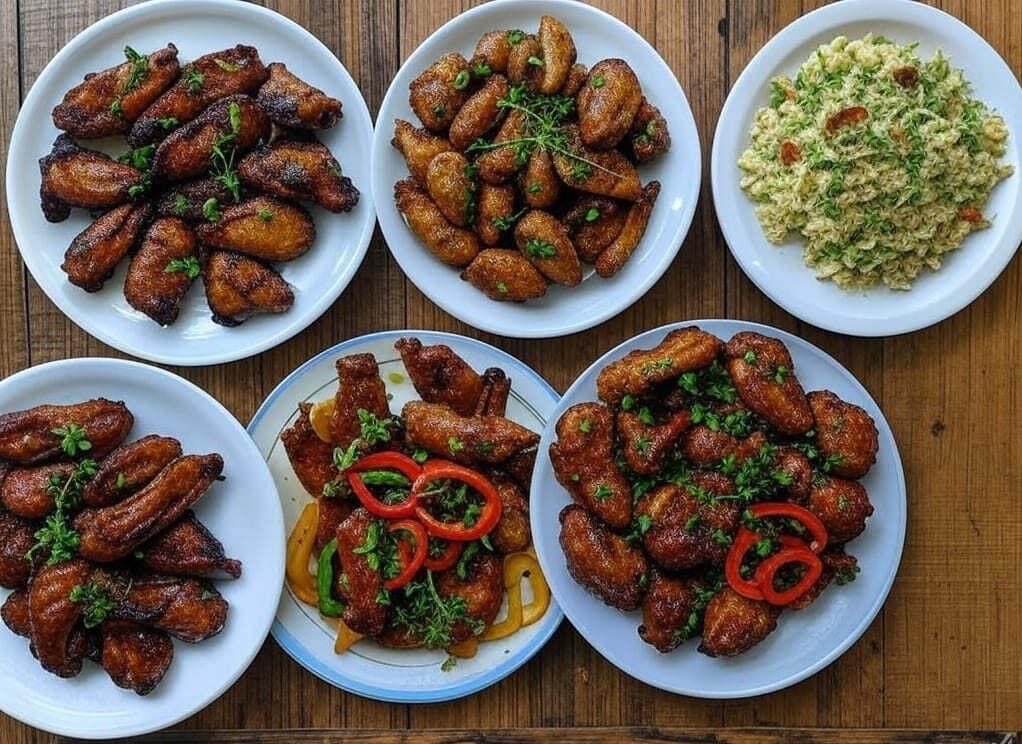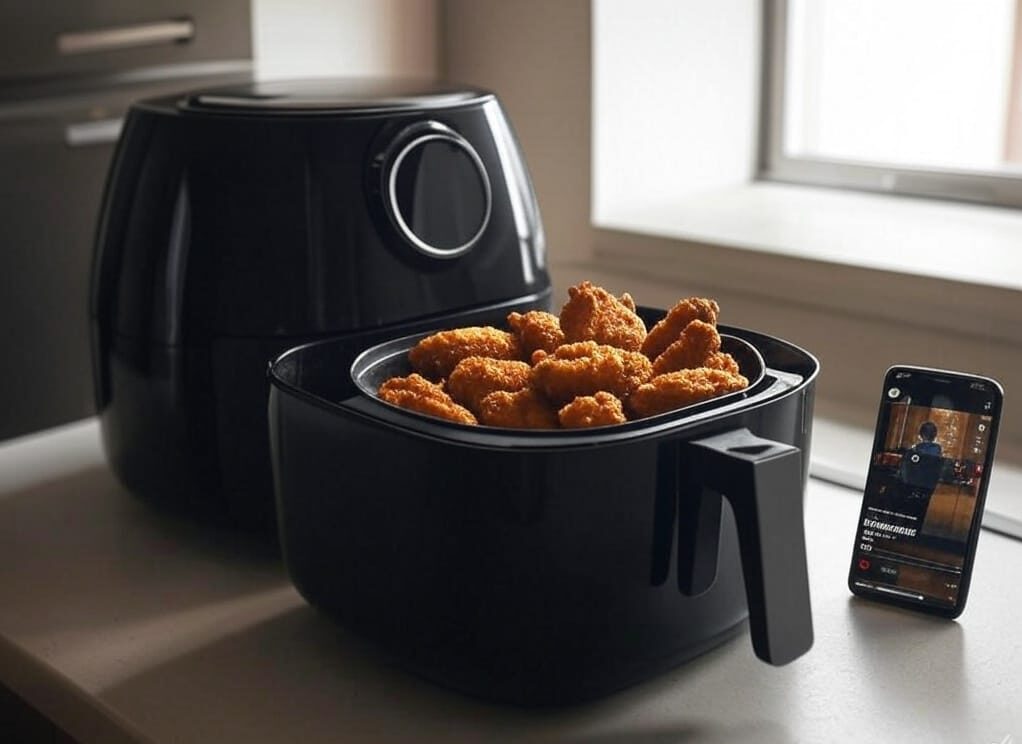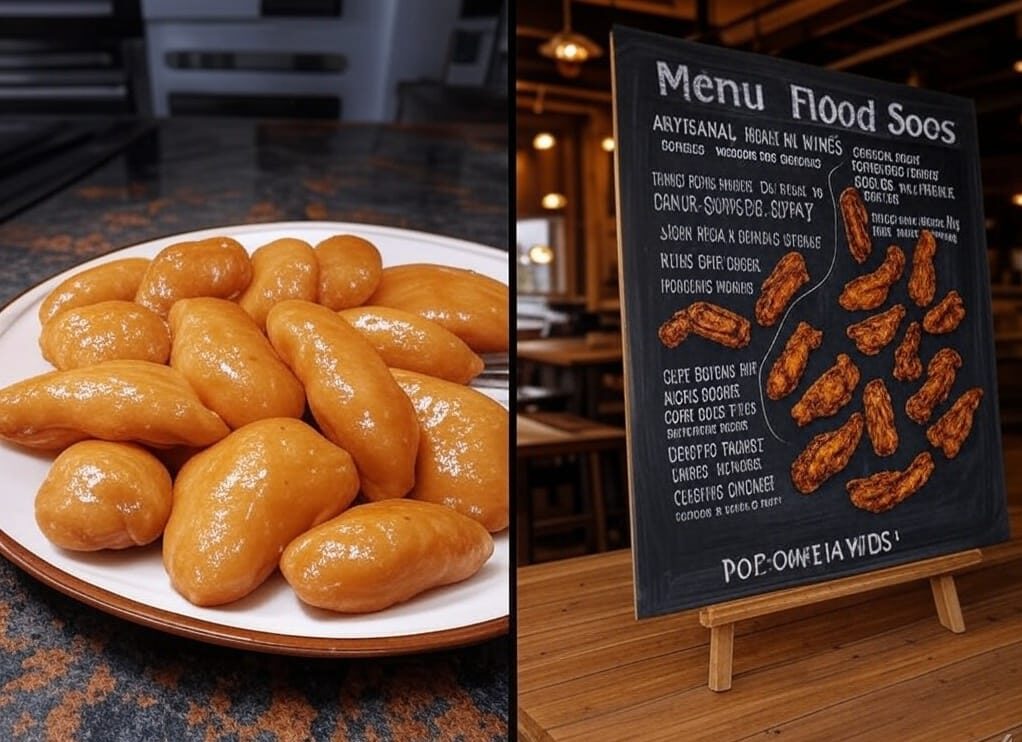
From Trash to Treasure: The Improbable Rise of the Chicken Wing
In 1964, Teressa Bellissimo, co-owner of Buffalo’s Anchor Bar, faced a culinary dilemma: an unexpected shipment of chicken wings meant for stock. Rather than discard them, she deep-fried the wings, tossed them in a fiery mix of hot sauce and butter, and served them with celery and blue cheese. The Buffalo wing was born—a dish that would transform poultry economics and American sports culture forever.
Today, Americans consume 1.4 billion wings during Super Bowl weekend alone, turning what was once a butcher’s afterthought into a $1.3 billion industry. But beyond the bar snacks and game-day platters lies a rich tapestry of history, science, and global reinvention. This deep dive unveils 10 surprising facts about chicken wings, from their wartime origins to their role in shaping modern food tech.
1. Wings Were Once Poverty Food: A Story of Resilience and Reinvention

Before chicken wings became a $1.3 billion industry, they were a symbol of frugality. In the early 20th century, wings were considered undesirable scraps, often discarded or relegated to stockpots. During the Great Depression, butchers sold them for pennies per pound to immigrant communities and working-class families.
- Jewish Delis: Wings were fried or stewed as “wings and things” platters, paired with gribenes (crispy chicken skin cracklings).
- Black Southern Kitchens: Wings became “Sunday supper” staples, coated in cornmeal and pan-fried in lard.
- Post-WWII Shift: As industrial poultry farming boomed, breasts and thighs were prioritized. Wings remained a budget cut, priced at 19 cents/lb in 1977 vs. $1.29/lb for breasts (New York Times).
The tide turned in 1964 when Teressa Bellissimo of Buffalo’s Anchor Bar transformed wings into a bar snack. Her creation—tossed in cayenne-hot sauce and served with celery—coincided with the rise of casual dining. By 1980, wings had shed their “poor man’s food” label, becoming a blue-collar delicacy.
Quote:
“Wings tell the story of American ingenuity,” says historian Dr. Jessica Harris. “They’re a testament to how marginalized communities turned scarcity into celebration.”
2. The NFL’s Role: How Football Made Wings a National Obsession

The NFL’s explosive growth in the 1980s and 1990s turned wings into a cultural phenomenon. Key milestones:
- 1983: Domino’s Pizza added Buffalo wings as a side dish, targeting football fans. Sales soared by 40% in NFL cities.
- 1990: Philadelphia’s first “Wing Bowl” drew 100 fans; by 2005, it attracted 20,000 to watch competitive wing-eating.
- 2003: The National Chicken Council coined the term “Super Bowl of Wings,” linking game-day consumption to patriotism.
By the Numbers:
- 1990: 1.2 billion wings consumed annually in the U.S.
- 2023: 1.4 billion wings eaten during Super Bowl weekend alone.
“The NFL and wings grew up together,” says sports economist Lee Jenkins. “Wings are the ultimate shareable food—messy, communal, and perfect for halftime debates.”
Craving game-day wings? Learn how to make them healthier in Is Fried Chicken Bad for Weight Loss?.
3. The Science of Crispy Skin: Why Flats Outperform Drumettes

The eternal “flat vs. drumette” debate isn’t just about preference—it’s rooted in chemistry.
Anatomy of a Wing
- Drumette: Resembles a mini drumstick; single bone with more meat.
- Flat: Two parallel bones, yielding crispier skin and even seasoning distribution.
- Tip: Cartilage-rich, often used in Asian broths for collagen extraction.
A 2021 Journal of Food Science study revealed:
- Oil Absorption: Flats absorb 15% less oil than drumettes due to thinner skin and less surface area.
- Maillard Reaction: Flats brown faster, creating more flavor compounds (2-acetyl-1-pyrroline, responsible for “roasty” aromas).
Pro Tip: For maximum crispiness, chef J. Kenji López-Alt recommends:
- Dry wings overnight on a rack.
- Toss in baking powder (alkaline pH accelerates browning).
- Bake at 450°F for 45 minutes.
4. Global Reinventions: Wings as Cultural Canvas

From Seoul’s street markets to Johannesburg’s braai stands, wings have been reimagined through local flavors and traditions:
South Korea: Dakgangjeong (닭강정)
- Technique: Wings are double-fried for crunch, then glazed in a sticky mix of soy sauce, honey, and sesame oil.
- Serving: With tangy pickled radish (mu) to balance sweetness.
- Cultural Role: Popular as anju (bar food) paired with soju.
Nigeria: Peppered Wings
- Marinade: Scotch bonnet peppers, ginger, garlic, and nutmeg.
- Cooking: Deep-fried, then tossed in a fiery dry rub.
- Pairing: Served with jollof rice or plantains for a sweet-heat contrast.
Poland: Skrzydełka wędzone (Smoked Wings)
- Preparation: Brined in beer and smoked over applewood.
- Serving: With chrzan (horseradish cream) and boiled potatoes.
- History: A Cold War-era pub snack popularized during meat shortages.
Jamaica: Jerk Wings
- Marinade: Allspice, thyme, scallions, and fiery scotch bonnet.
- Cooking: Grilled over pimento wood for smoky depth.
- Tradition: Served at street festivals and family gatherings.
Quote:
“Every culture imprints its soul onto wings,” says chef Marcus Samuelsson. “They’re a blank slate for culinary storytelling.”
Discover how global traditions intersect with nutrition in Are Chicken Wings Healthy?.
5. The Air Fryer Boom: How Wings Became the Poster Child of a Kitchen Revolution

The air fryer’s meteoric rise from niche gadget to kitchen essential is inextricably linked to chicken wings. During the pandemic, as home cooks sought ways to replicate restaurant-quality crunch without deep-frying’s guilt, wings became the ultimate test for this countertop marvel.
The Pandemic Wing Craze
- 2020 Sales Surge: Air fryer purchases spiked 78% year-over-year, with wings cited as the top recipe searched (Google Trends).
- Social Media Fuel: TikTok videos tagged #AirFryerWings garnered 2.1 billion views by 2023, featuring hacks like “10-minute crispy wings” and “buffalo glaze without the mess.”
Why Wings?
Air fryers excel at rendering fat while preserving moisture—a critical balance for wings. A 2022 Journal of Food Science study found:
- Fat Reduction: Air-fried wings retained 70% less oil than deep-fried versions.
- Texture: The rapid air circulation mimicked double-frying’s crispiness without the hassle.
Case Study: Wingstop’s Home Kit
In 2021, Wingstop capitalized on the trend by launching DIY air fryer kits. “Sales jumped 34%,” CEO Charlie Morrison noted. “We realized wings weren’t just a meal—they were a project for home cooks.”
Quote:
“The air fryer didn’t just change how we cook wings—it changed how we think about indulgence,” says food tech analyst Amanda Cohen.
6. The Science of Crispy Skin: Alchemy in the Kitchen

The quest for the perfect wing crust is equal parts art and chemistry. From pH manipulation to thermal dynamics, here’s how science unlocks crispiness:
Baking Powder’s Magic
- Alkaline Boost: Baking powder raises skin’s pH, weakening proteins and accelerating the Maillard reaction (browning).
- Micro-Bubbles: As wings bake, baking powder releases carbon dioxide, creating a porous, crackly texture.
Pro Tip: Chef J. Kenji López-Alt’s “Ultimate Crispy Wing” method:
- Dry brine wings overnight with 1 tsp baking powder per pound.
- Bake at 450°F on a wire rack (airflow is key).
- Finish under the broiler for glass-like shatter.
Double Frying: A Korean Secret
Korean dakgangjeong masters double-fry wings:
- First Fry (300°F): Renders fat and cooks meat gently.
- Second Fry (375°F): Creates a brittle, honeycomb-like crust.
“It’s about controlling water activity,” explains Dr. Arielle Johnson, MIT food scientist. “Remove moisture, then build texture.”
Pair crispy wings with diabetes-friendly sides using tips from Can Diabetics Eat Fried Chicken Without the Skin?.
7. Bone-In Revival: How Wings Redefined Meat Nostalgia

In the 1990s, boneless skinless chicken breasts dominated diets as the “healthy” choice. Wings spearheaded a backlash, celebrating bone-in meat’s primal appeal.
The Psychology of Gnawing
- Sensory Satisfaction: Gnawing meat off bones triggers primal pleasure centers, per a 2020 Appetite study.
- Authenticity: 67% of millennials associate bone-in wings with “craft” and “tradition” (Technomic 2023).
Economic Ripple Effects
- 1995: Wings accounted for 9% of U.S. chicken sales.
- 2023: Wings command 22%, surpassing thighs and legs.
Quote:
“Wings revived the idea that eating should be experiential,” says culinary anthropologist Dr. Krishnendu Ray. “They’re a middle finger to the sterile, boneless era.”
For a deep dive into wing nutrition, see Are Chicken Wings Healthy?.
8. The Vegan Wing Revolution: Plants Take Flight

As plant-based diets surged, wings became the ultimate flexitarian challenge. The goal? Replicate the crispy-skinned, saucy experience without poultry.
Cauliflower Wings: The Gateway
- Texture Hack: Soaking florets in ice water pre-roasting mimics meat’s chew.
- Sauce Synergy: Cauliflower’s neutrality makes it a sponge for flavors like mango habanero or garlic parm.
Data Point:
- 2023 Sales: Vegan wings grew 89% in fast-casual chains, per SPINS.
Mycoprotein Breakthroughs
Companies like Quorn use fermented fungus to create meat-like fibers:
- Nutrition: 11g protein, 2g fat per serving—close to chicken’s profile.
- Sustainability: Mycoprotein production uses 90% less water than poultry farming.
Chef’s Perspective:
“Vegan wings aren’t a ‘substitute’—they’re their own genre,” says Chad Sarno, co-founder of Wicked Kitchen. “We’re not replicating wings; we’re reimagining them.”
9. The Record-Breaking Wing: Extreme Feats of Flavor and Scale

Chicken wings have inspired not just culinary creativity but jaw-dropping feats of engineering, endurance, and heat. From gargantuan wings to sauces that defy human tolerance, these records showcase wings’ cultural grip.
The Largest Wing Ever Created
In 2022, Buffalo’s Big Ditch Brewing Company crafted a 9.5-pound chicken wing to celebrate the city’s culinary legacy. The mammoth wing, made from a custom-grown bird, required:
- 48 hours of brining in cayenne-vinegar solution.
- A 6-foot-wide fryer built specifically for the project.
- 18 quarts of blue cheese dip.
“It was a love letter to Buffalo,” said chef Mike Andrzejewski. “We wanted to prove wings aren’t just snacks—they’re monuments.”
The Hottest Wings on Earth
At Los Angeles’ The Wing King, daredevils sign waivers before tackling “The Widowmaker”:
- Sauce: Carolina Reaper extract (2.2 million Scoville units).
- Challenge: Eat 10 wings in 10 minutes. Only 3% succeed.
- Aftermath: Paramedics are on standby; winners receive a “Survivor” T-shirt.
“Pain is part of the ritual,” says owner Randy Santel. “It’s not just heat—it’s camaraderie.”
Speed-Eating Glory
- World Record: Molly Schuyler ate 501 wings in 30 minutes at Philadelphia’s 2023 Wing Bowl.
- Tactic: She stripped meat from bones with her teeth, averaging 2.8 wings per minute.
10. Wings as an Economic Indicator: The “Wing Index”

Chicken wings have become an unlikely barometer of economic and cultural shifts, with prices fluctuating alongside global events, sports seasons, and even climate crises.
The Wing Index: Tracking Prices Through Turbulence
- 2013: Wings hit $2.15/lb ahead of the Ravens-49ers Super Bowl, dubbed the “Harbaugh Bowl” spike.
- 2021: Pandemic supply-chain chaos sent prices to $3.25/lb, forcing chains like Wingstop to promote boneless wings as “saver” options.
- 2024: Prices stabilized at $2.10/lb as poultry farms expanded production by 18% (National Chicken Council).
Climate and Feed Costs
- Corn Droughts: Chicken feed (60% corn) price hikes directly impact wing costs. A 2022 Midwest drought added $0.30/lb to wings.
- Avian Flu: The 2023 outbreak culled 58 million birds, briefly spiking prices by 24%.
The “Wingflation” Strategy
Restaurants now use wings to gauge consumer spending:
- Premium Pricing: Sports bars charge up to $18/lb during playoffs, testing fan loyalty.
- Happy Hour Tricks: Offering $0.10 wings with drink purchases to drive traffic.
Quote:
“Wings are the canary in the coal mine for discretionary spending,” says economist Laura Reese. “When wing sales dip, recession fears rise.”
The Wing’s Legacy: More Than a Bar Snack
From Depression-era frugality to Silicon Valley tech trends, chicken wings mirror societal shifts. They’ve survived wars, diets, and foodie revolutions—not just as sustenance, but as symbols of resilience and reinvention.
As author Michael Pollan observes: “The wing’s journey from stockpot to stadium tells us everything about American ingenuity—and appetite.”

